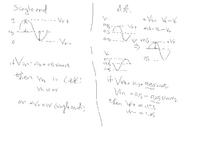Monady
Advanced Member level 4

ADC Problem
Hi dear all friends,
i had designed an ADC that had Only Vin and Vref as inputs. both of Vin and Vref were between 0V and 1V:
Vin=0.5+0.5*sin(ωt) & Vref=1
Now i have to use of fully differential inputs (Vin+, Vin- and Vref+, Vref-).
now i mixed up for determining values of Vref+ and Vref-.
in fully differential scheme we have:
Vin+=0.5+0.25sin(ωt) Vin-=0.5-0.25sin(ωt)
I would be appreciated for any suggestion.
Hi dear all friends,
i had designed an ADC that had Only Vin and Vref as inputs. both of Vin and Vref were between 0V and 1V:
Vin=0.5+0.5*sin(ωt) & Vref=1
Now i have to use of fully differential inputs (Vin+, Vin- and Vref+, Vref-).
now i mixed up for determining values of Vref+ and Vref-.
in fully differential scheme we have:
Vin+=0.5+0.25sin(ωt) Vin-=0.5-0.25sin(ωt)
I would be appreciated for any suggestion.




